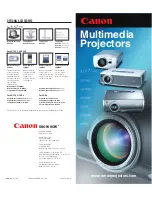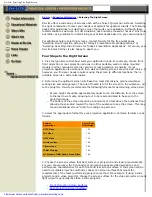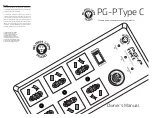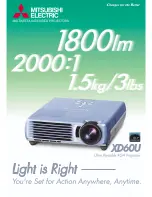
15
If your video device has composite video output:
1. Plug the A/V cables round yellow connector into the composite “video-out” connector on your
video device (Figure 17). This connector may be labeled “To Monitor.”
2. Plug the other yellow connector into the yellow composite connector (labeled video 2) on the
projector.
Figure 17:
Connecting the projector to a video player using the audio video (A/V) cable
3. If you want sound from the projector’s speaker, plug the A/V cable’s white connector into the
left “audio out” connector on your video device. Plug the cable’s red connector into the right
“audio out” connector on the video device.
4. Plug the A/V cable’s other white connector into the white “audio L” connector on the projector.
Plug the cable’s other red connector into the red “audio R” connector on the projector.
5. Follow steps 5-10 starting on page 14.
To watch HDTV
Determine the cables you’ll need (refer to the table on page 10 if necessary). This depends on
what type of output is coming from the tuner (remember, you cannot directly connect the coaxial
cable that enters your house from a cable or satellite company, the signal must pass through a
tuner first.) Also, determine if you want the sound to come out of the projector or out of your own
audio system. You can connect the audio directly to the projector to get sound from the 3-watt
onboard speaker, or you can connect it to your stereo’s receiver to get sound from your own
speakers.
NOTE:
If needed, you can purchase longer cables at your local electronics store.
If your HDTV tuner has a 15-pin VGA output:
1. Plug one end of the VESA cable to the VGA connector on your HDTV source (Figure 18). This
connector may be labeled “To Monitor.”
2. Plug the other end of the cable
into the VESA connector
(labeled PC 2) on the
projector.
VESA
cable
Figure 18:
Connecting the projector to an HDTV source using the VESA cable
















































